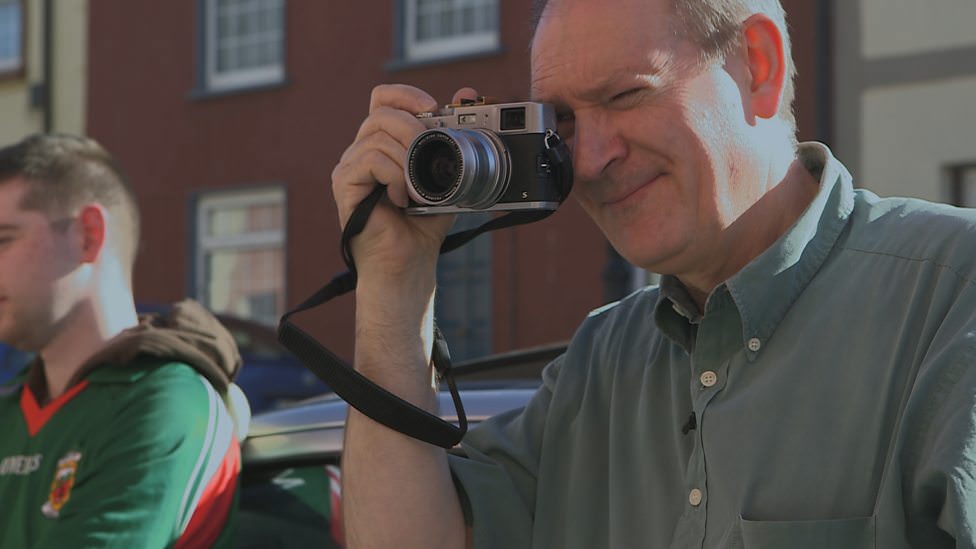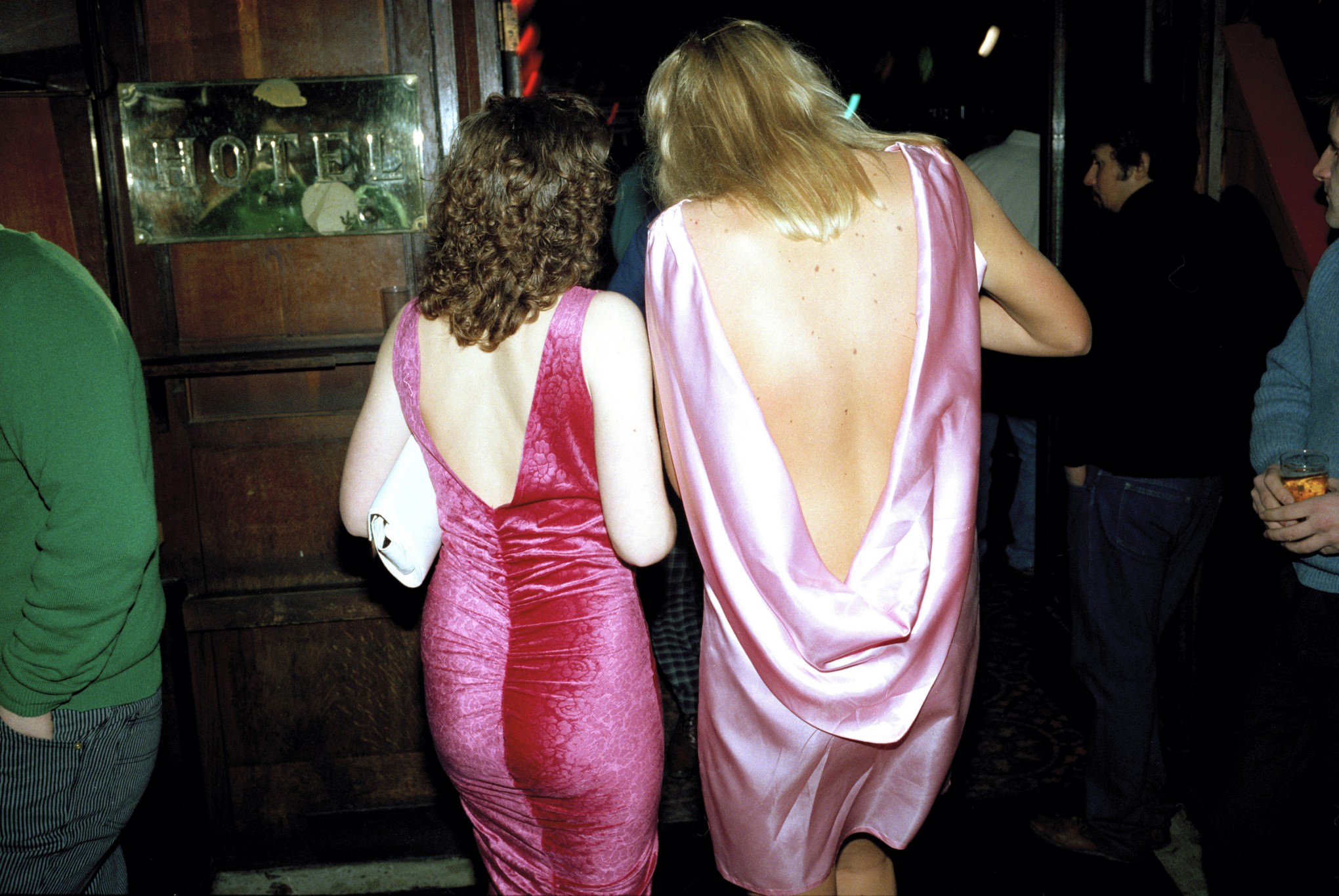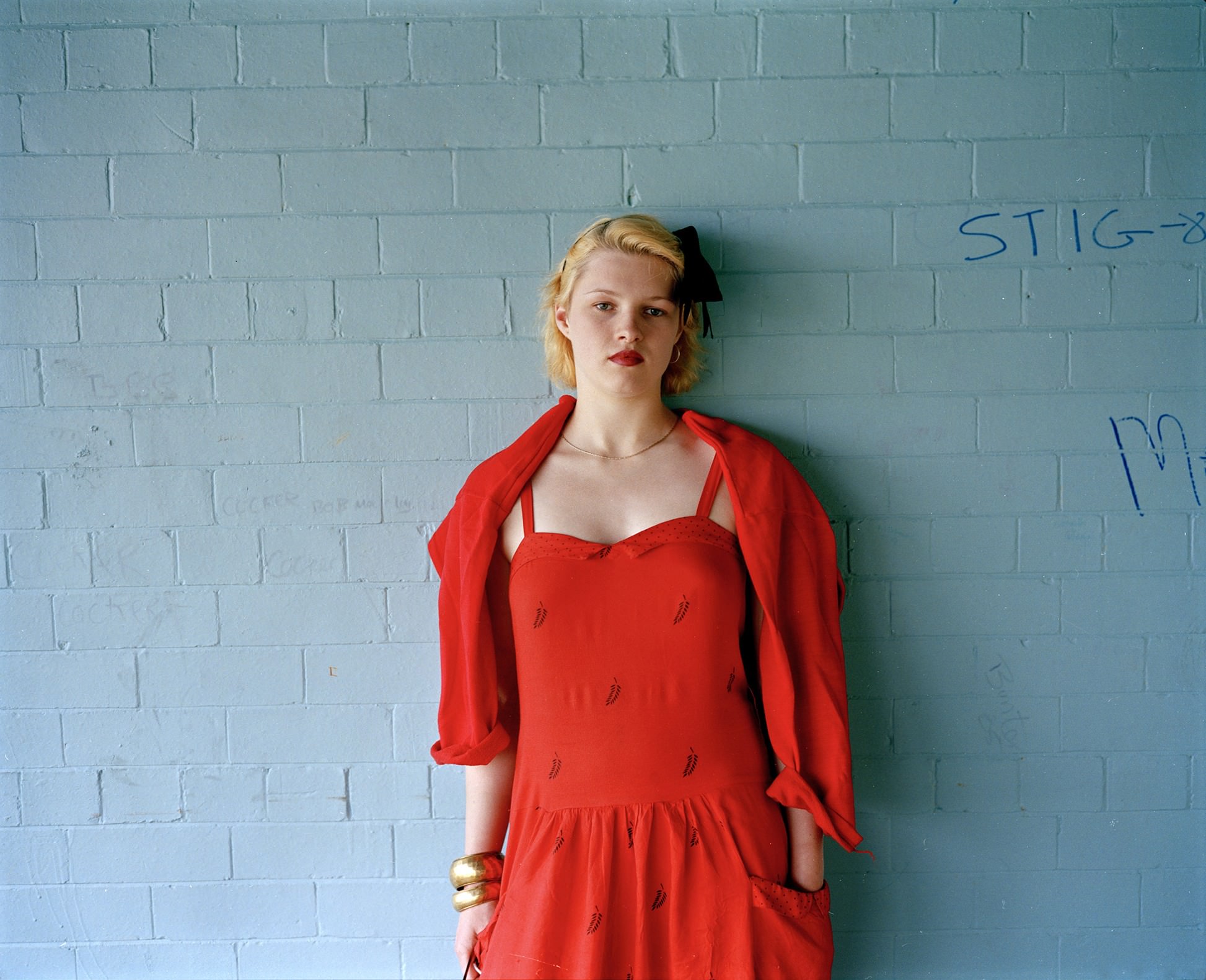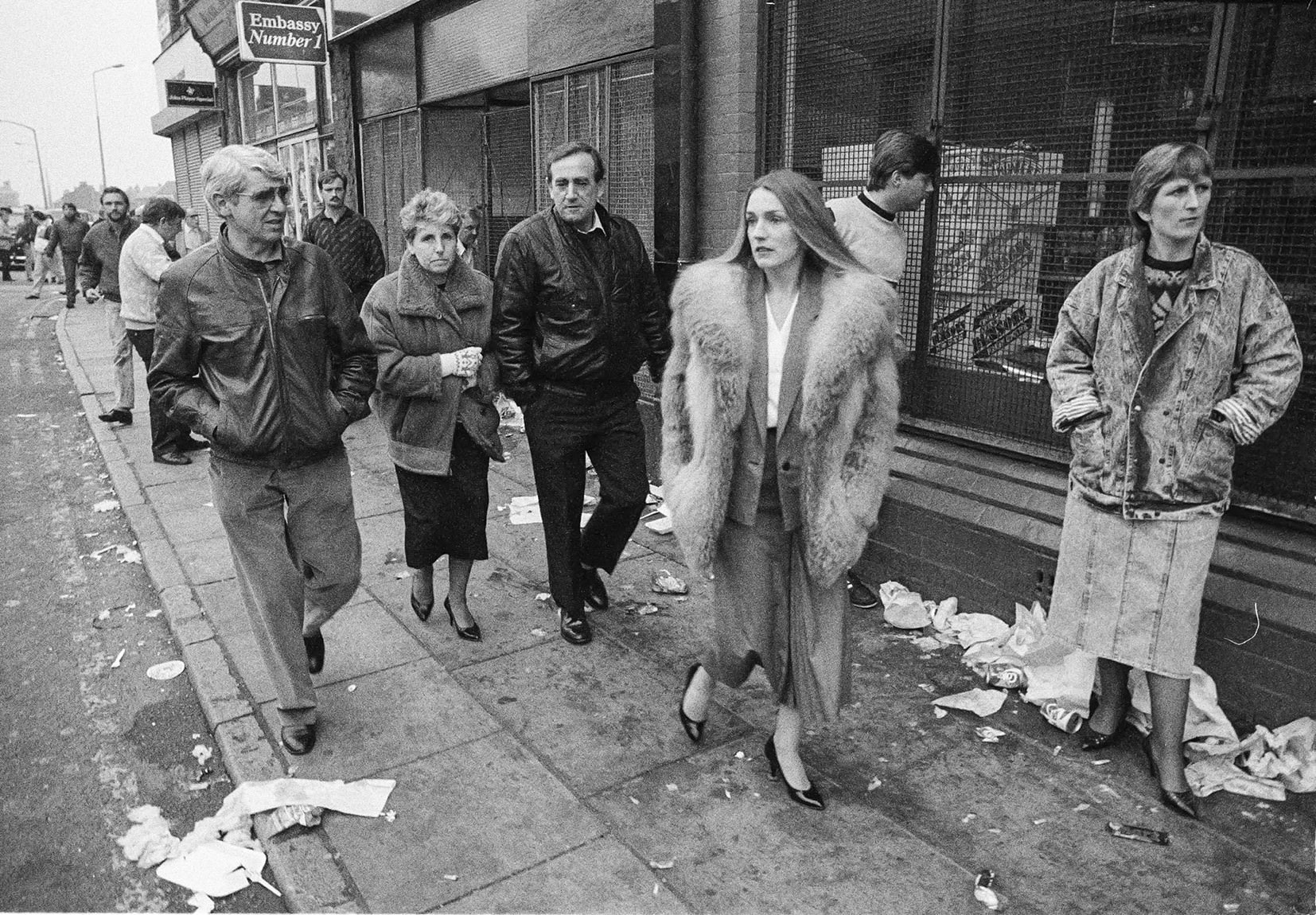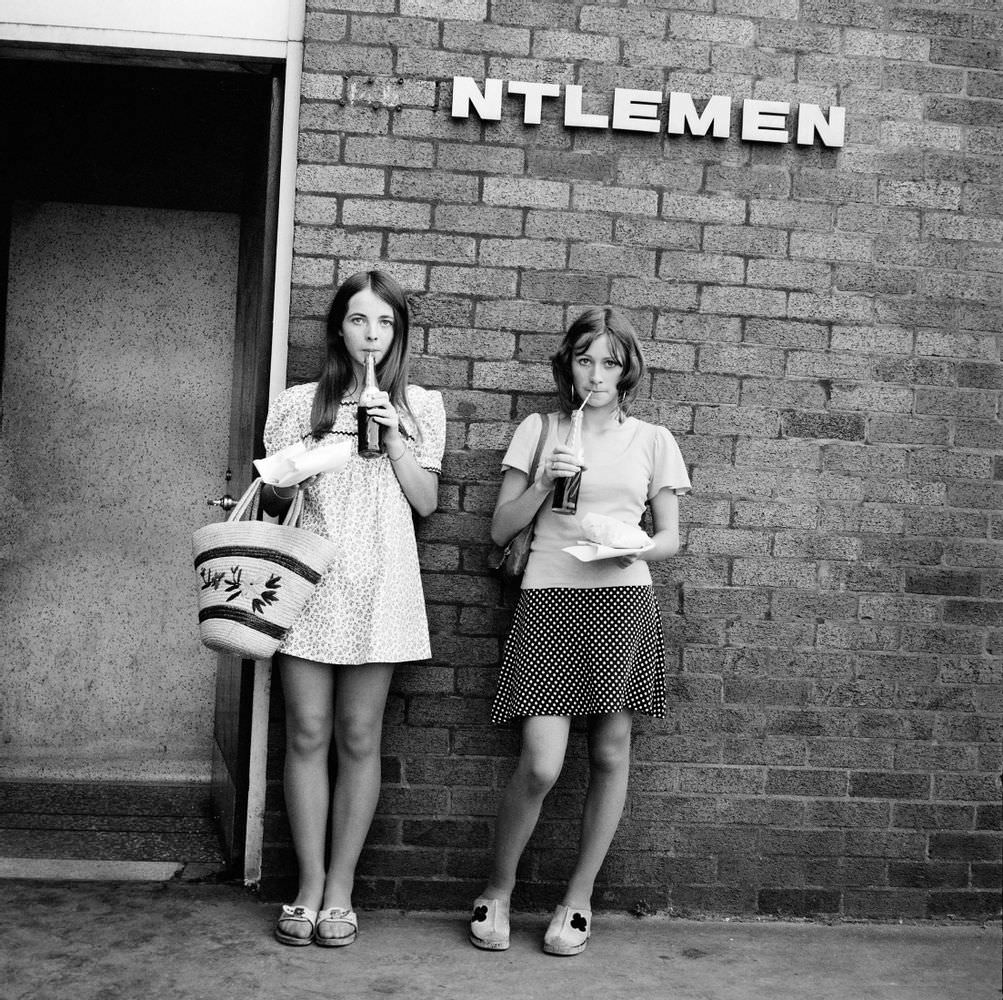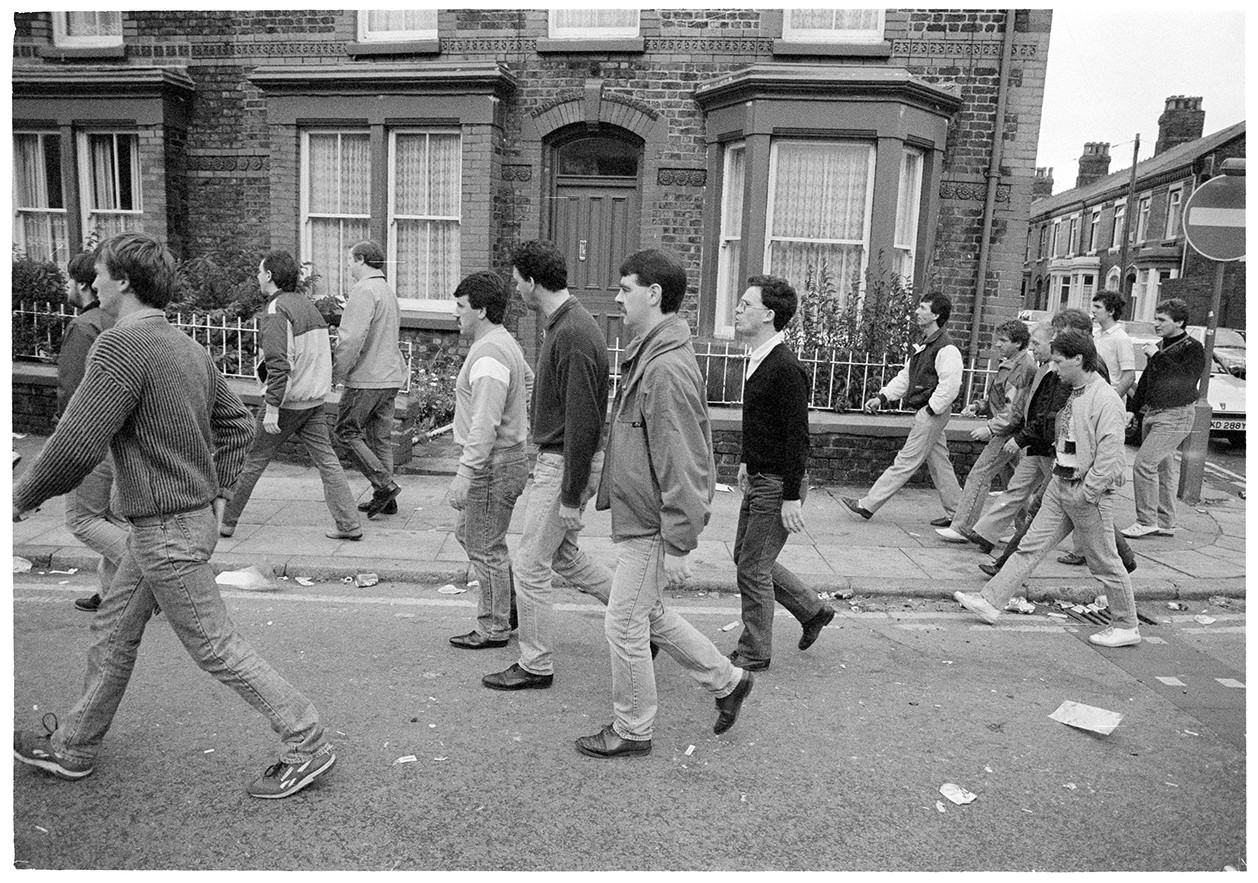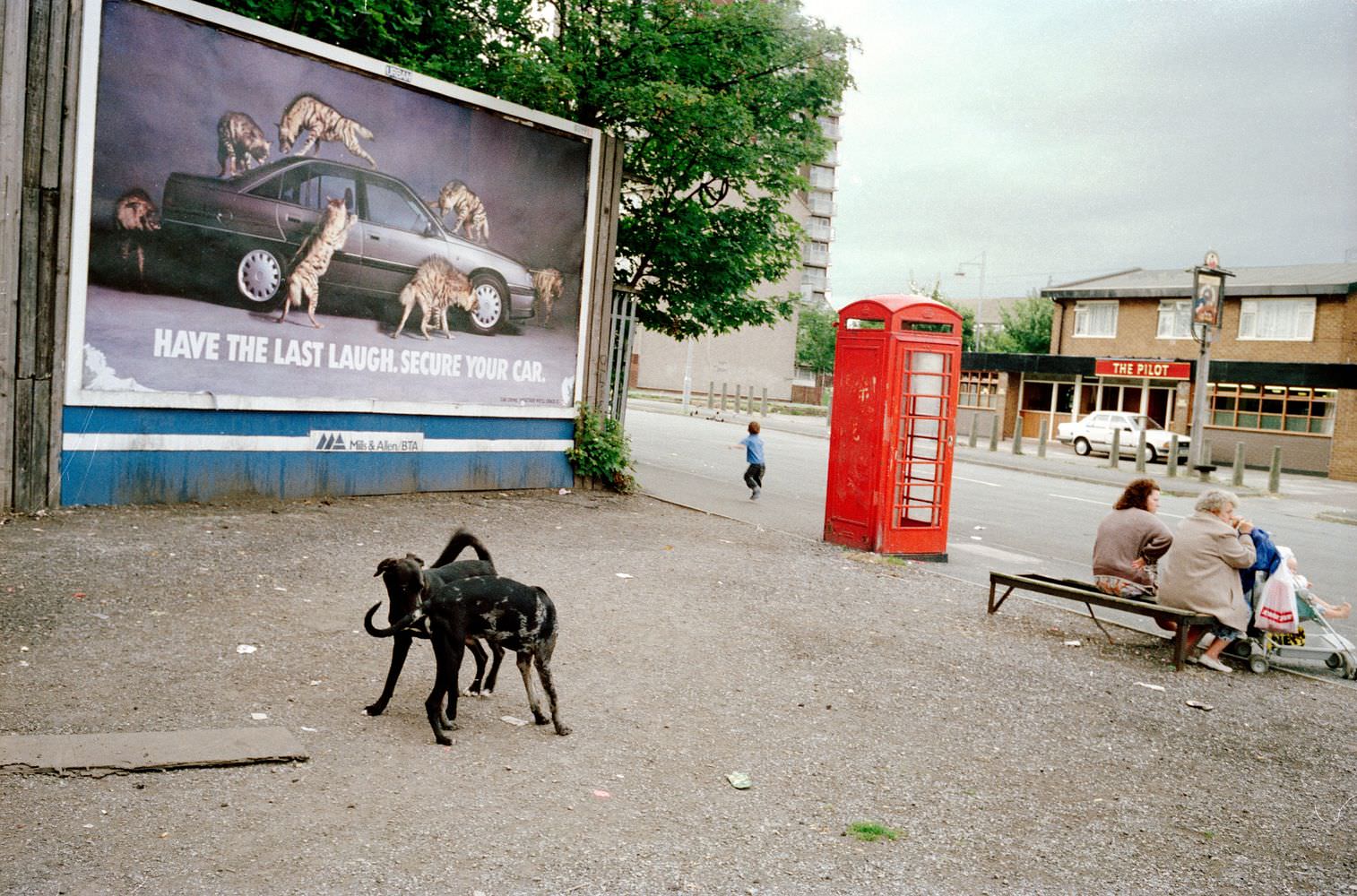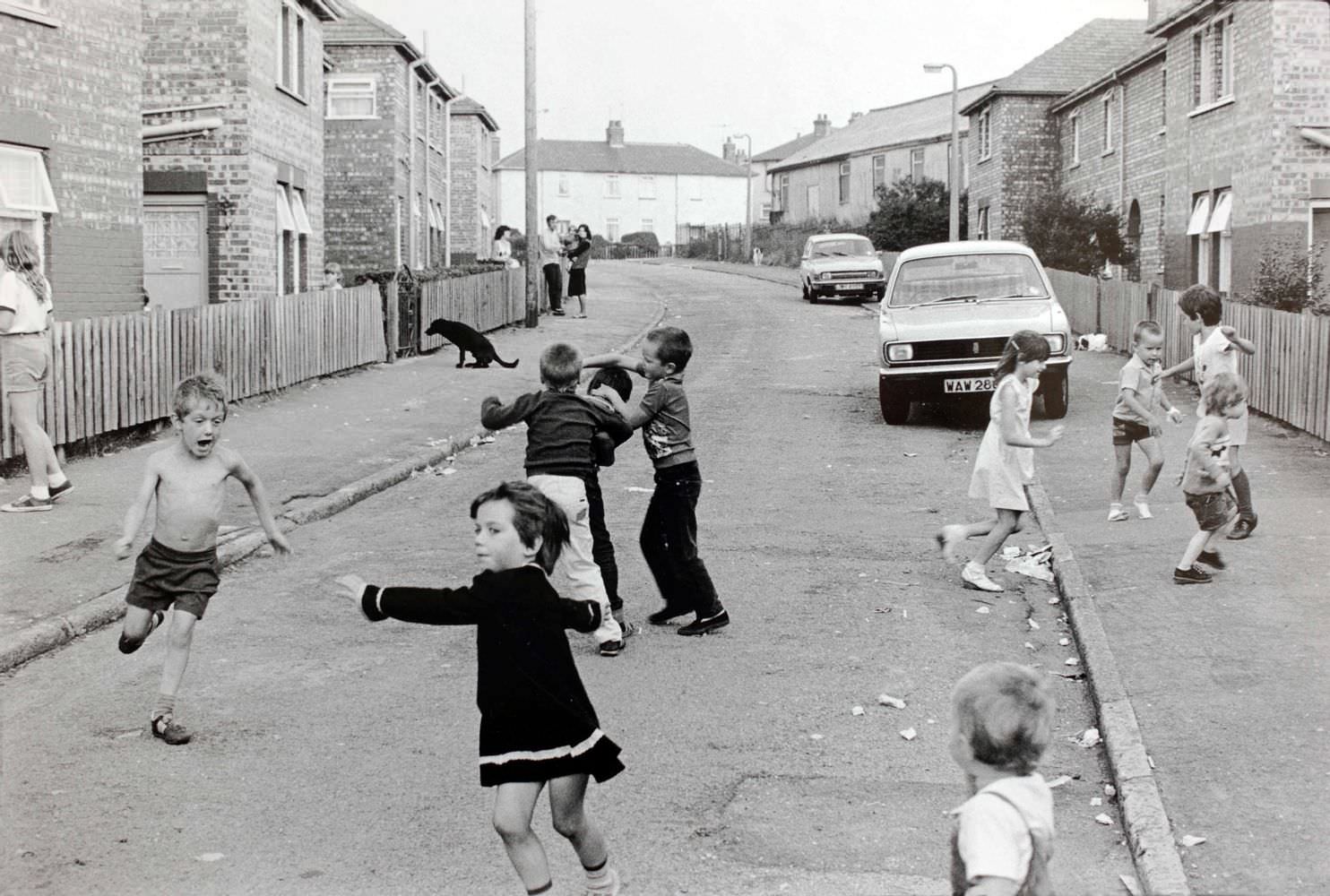Tom Wood: Every day is Saturday
“I was one of them”. With those four words, Tom Wood reveals a profound connection to the individuals he has captured through his lens on the streets of Liverpool for over three decades since the 1970s. Initially trained as a painter, he turned to photography to reproduce his artwork, eventually realizing that it would become his sole medium. The exact moment he transitioned from brushes to camera remains a mystery. In Liverpool, winds of change have long been blowing. Margaret Thatcher’s reign ushered in an era of liberalism, accompanied by factory closures and the harsh consequences endured by the working class. As Liverpool, once a prominent port, loses its people and jobs, Tom Wood chooses not to focus on this inevitability or the traumas of class warfare. Though his images bear witness to these realities, he adamantly refuses the label of a documentary photographer. Instead, he is known as “The guy with the camera” or Photie Man, a nickname bestowed upon him by teenagers who, like him, roam the streets. This nickname validates his place within the community, defining him by the one distinctive feature that sets him apart – his ever-present camera. Yet, apart from this, he is just like them. His father toiled as a worker in the automobile industry, and his mother could be one of the women he photographs at the market on Fridays. It is perhaps this shared experience that imbues his gaze with empathy, free from the caustic judgments, irony, or cynicism that can plague photographers. He is liberated from the false detachment of those who merely observe or express their viewpoints through photography but remain distant from the subjects. He does not offer his opinion but wholeheartedly embraces the energy of the crowd that surrounds him. Liverpool, a rebellious city and the most left-wing in England, boasts indifference to the monarchy and staunch opposition to Brexit. It is the birthplace of the Beatles and the starting point of the Merseybeat, a rock revolution that upended not only the city but also England and the world.
Tom Wood’s extensive body of work weaves together multiple photographic series, displaying a rare coherence that suggests he has been guided by an innate intuition or a master plan over the past thirty years. In his seminal series, “Looking for Love,” Wood transports us to the Chelsea Reach nightclub, a place he frequented religiously for several years. Here, the people of Liverpool indulge in the madness of Saturday nights – joyful, raw, hilarious, and wild. It is a time to forget about the struggles and odd jobs and reclaim ownership of their bodies, which are often subject to the demands of labor. Amid the darkness of the dance floor, women shine, adorned with luxuriant hair styled in the latest fashions, captivating earrings, and devastating makeup and lipstick. Men, clad in ordinary jeans and shirts, gaze at the girls and drink to muster the courage to partake in the seductive rituals of disco dancing. If we close our eyes for a moment, we can almost sense the damp air, the sticky carpet underfoot, the smell of cigarettes, and the slippery dance floor.
While Tom Wood effortlessly transitions between black and white and color photography, he is also a pioneer in the realm of color. He dedicated several years to capturing the Cammell Laird shipyard, where workers fought against its impending closure in vain. Many of these individuals had spent decades working there, following in the footsteps of their fathers before them. Their destiny now lay in prolonged periods of unemployment and hardship. Wood composes a gallery of portraits brimming with humanity, reminiscent of a cherished family album rather than a documentary report. Amidst the shipyard’s domain of metalwork, he captures welding sparks and the ethereal glow of a hurricane lamp in the twilight. In the streets, Wood photographs families, siblings, groups of friends, and lovers. Whether they are strolling, heading to work, or attending a football match in a city where the sport is elevated to the status of a secular worship, it is the faces—the people—that capture his interest. He steers away from events, anecdotes, and even the stadium itself, though he often roams its vicinity with his camera on Saturday evenings.
Within his gaze, one can discern the tenderness of someone who contemplates with heartfelt emotion the myriad of lives he could have lived. And so, he walks. Life continues day after day, its strength derived from persistence and an eye sharpened by countless hours of observation. Day after day, he weaves together an immense work, a testament to his unwavering dedication.
About the Author
Thomas Wood, a renowned Irish street photographer, portraitist, and landscape photographer, has made a significant impact in the field of photography. Based in Britain, Wood is most recognized for his captivating images captured in Liverpool and Merseyside between 1978 and 2001. His lens ventured into various settings, including streets, pubs, clubs, markets, workplaces, parks, and football grounds, portraying a diverse mix of strangers, neighbors, family, and friends. Wood’s exceptional work has been published in numerous books, showcased in solo exhibitions, and honored with awards. Currently, he has a retrospective exhibition at the Walker Art Gallery in Liverpool, running until January 7, 2024.
Born and raised in County Mayo, Ireland, Wood’s family migrated to England during his adolescence due to his mother, a Catholic, marrying his Protestant father, which prompted their departure. Initially trained as a conceptual painter at Leicester Polytechnic from 1973 to 1976, his exposure to experimental films ignited a passion for photography, in which he is primarily self-taught. Wood’s approach to photography encompasses a broad range of themes and influences, breaking away from the confines of post-Conceptual photography or photojournalism. In 1978, he relocated to Merseyside, and later in 2003, he moved to North Wales, where he currently serves as a part-time photography lecturer at Coleg Llandrillo Cymru.
Wood’s photographic focus primarily centered on Liverpool and Merseyside from 1978 to 2001, particularly in the realm of street photography. His subjects were captured in various locales, including streets, pubs, clubs, markets, workplaces, parks, and football grounds, depicting both strangers and familiar faces from the community. Simultaneously, he undertook a long-term study of the landscape in the west of Ireland, North Wales, and Merseyside. Wood has maintained a yearly connection to the west of Ireland, revisiting the place his family left behind. Furthermore, he has incorporated video into his artistic repertoire since 1988, regularly documenting family life.
Wood gained significant recognition with his first book and renowned series, “Looking For Love” (1989), which presents intimate portrayals of individuals in the Chelsea Reach disco pub in New Brighton, Merseyside. Between 1982 and 1985, he dedicated his time to photographing the vibrant scenes of this establishment. His subsequent works include “All Zones Off Peak” (1998), a compilation of photographs captured during his “bus odyssey” from 1978 to 1996, documenting his experiences riding the buses of Liverpool. “People” (1999) and the retrospective book “Photie Man” (2005), created in collaboration with Irish artist Padraig Timoney, further showcase Wood’s artistic prowess. His contributions are also featured in the revised edition of “Bystander: A History of Street Photography” (2001).
In 2012, Wood’s first major British exhibition, titled “Men and Women,” took place at The Photographers’ Gallery in London. The National Media Museum in Bradford hosted his first comprehensive retrospective in the UK in 2013, while his landscape photographs debuted in an exhibition in 2014. Critics have lauded Wood as a pioneering colorist and a photographer who defies conventional rules. His instinctive and intimate approach to capturing people in close proximity has garnered high praise, avoiding accusations of voyeurism or intrusion often associated with similar work. Wood’s photographs resonate with a sense of human existence, encapsulating the lives that traverse the depicted spaces. Renowned photography critic Vince Aletti of The New Yorker described Wood’s style as loose, instinctive, and spot-on, asserting that he surpasses even the renowned Martin Parr in terms of formalism.
Tom Wood: Every day is Saturday
June 23–October 15, 2023
Centre d’art GwinZegal – Guingamp – France
More info on:


